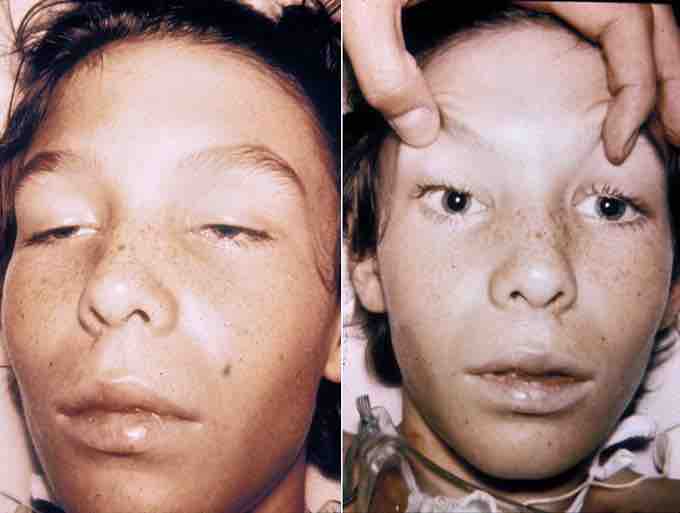Overview of Botulism
Botulism is a rare, but sometimes fatal, paralytic illness caused by botulinum toxin. It can affect a wide range of mammals, birds and fish. This toxin is a protein produced under anaerobic conditions by the bacterium Clostridium botulinum. The toxin enters the human body in one of three ways: by colonization of the digestive tract by the bacterium in children (infant botulism) or adults (adult intestinal toxemia), by ingestion of toxin from foods (foodborne botulism), or by contamination of a wound by the bacterium (wound botulism). Person-to-person transmission of botulism does not occur. All forms lead to paralysis that typically starts with the muscles of the face and then spreads towards the limbs . In severe forms, it leads to paralysis of the breathing muscles and causes respiratory failure. In light of this life-threatening complication, all suspected cases of botulism are treated as medical emergencies, and public health officials are usually involved to prevent further cases from the same source. Botulism can be prevented by killing the spores by pressure cooking or autoclaving at 121 °C (250 °F) for 30 minutes or providing conditions that prevent the spores from growing. Additional precautions for infants include not feeding them honey.

Botulism
A 14-year-old with botulism. Note the bilateral total ophthalmoplegia with ptosis in the left image and the dilated, fixed pupils in the right image. This child was fully conscious.
C. botulinum is an anaerobic, Gram positive, spore-forming rod. Botulinium toxin is one of the most powerful known toxins: about one microgram is lethal to humans. It acts by blocking nerve function (neuromuscular blockade) through inhibition of the release of the excitatory neurotransmitter acetyl choline from the presynaptic membrane of neuromuscular junctions in the somatic nervous system. This causes paralysis. Advanced botulism can cause respiratory failure by paralyzing the muscles of the chest, which can progress to respiratory arrest. In all cases, illness is caused by the botulinium toxin produced by the bacterium C. botulinum in anaerobic conditions, and not by the bacterium itself. The pattern of damage occurs because the toxin affects nerves that fire (depolarize) at a higher frequency first.
MODES OF ENTRY
Three main modes of entry for the toxin are known. The most common form in Western countries is infant botulism. This occurs in small children who are colonized with the bacterium during the early stages of their lives. The bacterium then releases the toxin into the intestine, which is absorbed into the bloodstream. The consumption of honey during the first year of life has been identified as a risk factor for infant botulism and it is a factor in a fifth of all cases. The adult form of infant botulism is termed adult intestinal toxemia, and is exceedingly rare. Foodborne botulism results from contaminated foodstuffs in which C. botulinum spores have been allowed to germinate in anaerobic conditions. This typically occurs in home-canned food substances and fermented uncooked dishes. Given that multiple people often consume food from the same source, it is common for more than a single person to be affected simultaneously. Symptoms usually appear 12–36 hours after eating, but can also appear within 6 hours to 10 days. Wound botulism results from the contamination of a wound with the bacteria, which then secrete the toxin into the bloodstream. This has become more common in intravenous drug users since the 1990s, especially people using black tar heroin and those injecting heroin into the skin rather than the veins
TREATMENT
The only drug currently available to treat infant botulism is Botulism Immune Globulin Intravenous-Human (BIG-IV or BabyBIG). BabyBIG was developed by the Infant Botulism Treatment and Prevention Program at the California Department of Public Health. There are two primary Botulinum Antitoxins available for treatment of wound and foodborne botulism. Trivalent (A,B,E) Botulinum Antitoxin is derived from equine sources utilizing whole antibodies (Fab & Fc portions). This antitoxin is available from the local health department via the CDC. The second antitoxin is heptavalent (A,B,C,D,E,F,G) Botulinum Antitoxin which is derived from "despeciated" equine IgG antibodies which have had the Fc portion cleaved off leaving the F(ab')2 portions. This is a less immunogenic antitoxin that is effective against all known strains of botulism where not contraindicated. This is available from the US Army.